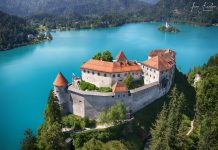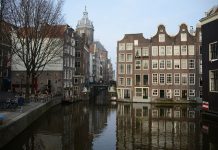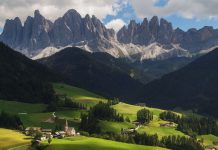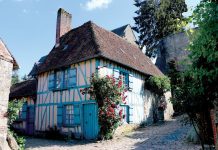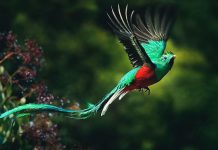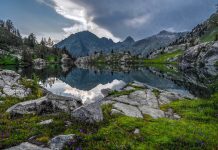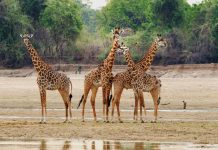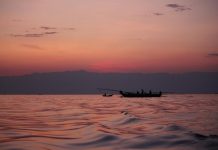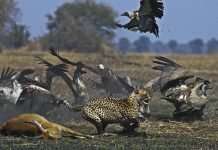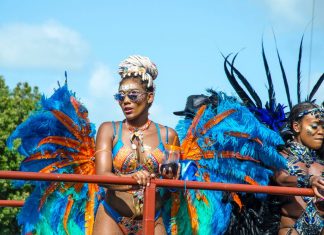Experts have dubbed South Luangwa as one of the greatest wildlife sanctuaries in the world, and not without reason. The concentration of game around the Luangwa river and it’s ox bow lagoons is among the most intense in Africa.
The Luangwa River is the most intact major river system in Africa and is the life blood of the park’s 9050km2. The Park hosts a wide variety of wildlife birds and vegetation. The now famous ‘walking safari’ originated in this park and is still one of the finest ways to experience this pristine wilderness first hand.
Tribal Textiles -Hand painted cloths made here
The changing seasons add to the Park’s richness ranging from dry, bare bushveld in the winter to a lush green wonderland in the summer months. There are 60 different animal species and over 400 different bird species. The only notable exception is the rhino, sadly poached to extinction.
Wildlife
If you’re staying at one of the Valley’s lodges, the guides will ensure you have every opportunity to see all that the valley has to offer of its wildlife, birds and varying vegetation and habitats. If you’re in your own vehicle, be sure to get a map of the park from the Crocodile Farm at the park entrance and follow the loop roads graded in the park, past dambos bursting with hippos, crowned cranes, grazing antelope and scurrying baboons. Further out on the plains you’re bound to see the large elephant herds, reaching up to 70 in number. Buffalo are abundant and spread throughout the valley.
The hippopotamus is one animal you won’t miss. As you cross over the bridge into the park there are usually between 30 and 70 hippos lounging in the river below and most of the dambos and lagoons will reveal many. There is estimated to be at least 50 hippos per kilometre of the Luangwa River!
Zebra can be seen running in small herds of about a dozen. The difference between Zambia’s zebras and those in the south and east of Africa are in the stripes. Here they are evenly spaced as opposed to broad light stripes with a faint shadow stripe in-between.
Thornicroft’s Giraffe, unique to Luangwa Valley should be easily spotted.
The park has 14 different antelope species, most of which are easily seen on game and night drives. Watch out for the elusive bushbuck, preferring to inhabit densely covered areas. The common duiker is not that common near the Luangwa river but inhabits the back country of the Luangwa Valley. The largest of the antelope is the eland, usually near the Nsefu sector of the park. The most numerous antelope is the impala, these gregarious animals can be seen in herds all over the park. Not to be confused with the Puku, of similar size but a much fluffier buck with a rich orange coat and also prolific. Perhaps the most beautiful is the Kudu, with its majestic spiral horns and delicate face. Although fairly common, they’re not always easy to find due to their retiring habits and preference for dense bush.. Reedbuck, roan, sable, hartebeest, grysbok, klipspringer and oribi are all here but not prolific in the central tourist area of the Park. They tend to stay deeper in the remote parts towards the Muchinga escarpment.
Of the primates, baboons and vervet monkeys are prolific. More scarce is Maloney’s monkey. Present, but unlikely to be seen except on night drives is the night ape, and the nocturnal bushbaby.
Hyenas are fairly common throughout the valley and their plaintive, eerie cry, so characteristic of the African bush can be heard on most nights.
South Luangwa has a good population of leopard but they are not that easy to spot and tend to retreat when they hear vehicles. Many of the Lodge’s game trackers are skilled in finding leopards on night drives however, and often visitors are rewarded with a full view of a kill.
Lions are as plentiful in the Luangwa as anywhere else in Africa, but when a kill is made away from the central tourist area, the pride may stay away for several days and may not be seen by visitors on a short stay. Very often they roam in prides of up to thirty.
Of the other carnivores present but not often seen is the caracal, wild dog, serval and side striped jackal.
The Luangwa river also has an extraordinarily high number of crocodiles. It is not uncommon to see several basking on the riverbanks or even floating down the river tearing at a dead animal.
Night drives are fascinating in the Luangwa. Not only for the chance of seeing a leopard but for the many interesting animals that only come to life at night. Genets, civets, servals, hyenas, and bushbabies as well as owls, nightjars, the foraging hippos, honey badgers and lion.
Birdlife
Birdwatching is superb in the Valley. Near the end of the dry season, when the river and oxbow lagoons begin to recede, hundreds of large waterbirds can be seen wading through the shallows. The red faced yellow billed storks move along with their beaks open underwater, disturbing the muddy liquid with their feet until the fish flop into their mouths. The pelicans tend to operate in lines abreast, driving the fish before them into shallows before scooping them up into their beak pouches. The striking 1.6m saddle bill stork makes quick darting movements into the water. Then there’s the marabou stork, great white egrets, black headed herons, open billed storks and the stately goliath heron that can stand in the same position for hours before pouncing. Of the most beautiful are the elegant crowned cranes, with their golden tufts congregating in large flocks at the salt pans.
Around the same time, just before the rains set in, in November, the palearctic migrants from Northern Europe and the intra-African migrants arrive to exploit the feeding opportunities that the warm rainy season brings. These include the red chested cuckoo, white storks, European swallows. Swifts, hobbies and bee-eaters, as well as birds of prey such as the Steppe eagles and Steppe buzzards that come all the way from Russia. A special sight is the hundreds of brightly coloured carmine bee-eaters nesting in the steep sandy banks of the river.
The ever-present sounds of the birds in the Valley takes some getting used to. An early caller is the ground hornbill, looking like a well-dressed turkey, but emitting the sound of a deep base drum. The melodious Heuglin’s robin, the shrill cry of the fish eagle and the background cooing of doves and larks.
With about 400 of Zambia’s 732 species of birds appearing in the Valley, including 39 birds of prey and 47 migrant species, there is plenty for the birdwatcher to spot, whatever the season.
For an enhanced experience of the bush, one would do well to develop an interest in the varying vegetation in Zambia. Some magnificent trees grow in the Valley and it certainly adds to the richness of one’s experience to begin to recognise different tree species and figure out the implications of them growing in that particular area.
Among the more common trees in the valley are the mopane, leadwood, winterthorn, some beautiful specimens of baobab, large ebony forests, the tall vegetable ivory palm, marula and the magnificent tamarind tree.
Getting there
Mfuwe Airport recently achieved international status and various airlines were looking at scheduled flights from abroad
Domestic flights operate about ten times a week in peak season (June-Oct) from Lusaka. Check with any travel agent for schedules.
Charter planes from outside the country can now fly direct without clearing customs at Lusaka and there are a number of charter companies in Zambia, that can fly to and from Zambia’s top destinations. All lodges do transfers to and from the airport. Zambian Airways has scheduled flights from Lusaka to Mfuwe. Air Malawi has scheduled flights from Lilongwe to Mfuwe
While you await your flight or before you head off to the bush, don’t miss a visit to Jake’s Moondog Cafe just outside the airport. An excellent bush bar with ice cold beers and great food. Next door is the famous Magenge Crafts Shop with an impressive collection of fine arts and crafts made by the local artists and craftsmen in the valley.
Driving, one can approach from three sides. The usual route is from Chipata. This is a good road if a little corrugated and the 123km drive takes about two hours to Mfuwe, just outside the Park. If travelling in a robust 4×4 from Lusaka, it is possible to take a short cut from the Great East Road at Petauke, up alongside the Luangwa River to Mfuwe. Only to be attempted well into the dry season. A good overnight stop along the way is at the Luangwa River Bridge at Bridge Camp.
The Northern access is from Mpika on the Great North Road or Lundazi, near Zambia’s eastern border with Malawi. Just below Mpika, there is a road running down the Munyamadzi Corridor between North and South Luangwa Parks. It is passable but only in 4WD and preferably with two vehicles as help is a long way away. The mountain pass down the escarpment is quite formidable, very rocky and bumpy but the view over this, the tail end of the Great Rift Valley, is quite spectacular.

